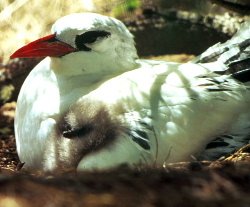|
R (Small
Washington Tablet)
22. → 314 * 7 Let's begin anew with these eye-catching glyphs, all of which I have guessed might illustrate the type which I have named rona:
... the emissaries went from the west coast up to the rim of the crater Rano Kau, where Kuukuu had started a yam plantation some time earlier. After they had departed from Pu Pakakina they reached Vai Marama and met a man. Ira asked, 'How many are you?' He answered, 'There are two of us.' Ira continued asking, 'Where is he (the other)?' To that he answered, 'The one died.' Again Ira asked, 'Who has died?' He replied, 'That was Te Ohiro A Te Runu.' Ira asked anew, 'And who are your?' He answered, 'Nga Tavake A Te Rona.' [E:46] After this, the emissaries and Nga Tavake went to the yam plantation ... Tava. Tavatava, pale. Tavake, sea bird, white, with rosy tail; its feathers were used to decorate hats and belts. Vanaga. Mgv.: A shellfish. To.: tava-amanu, id. Tavake, a seabird with a long red tail. Mq.: toavake, toae, the tropic bird. Sa.: tava'e, id. Ta.: Tavare, to trick, to dupe. Mq.: tavae, to cajole, to flatter. Ma.: taware, to dupe, to fool.. Mq.: Tavatava, a fish. Sa.: tavatava, id. Ha.: kawakawa, id. Churchill. Tavari, the plant Polygonum acuminatum grows on the crater lakes in close association with rushes and seems to have been used for medicinal purposes. Barthel 2.
|
|||||||||||||||||||||||||||||||||||||||||||||||||||||||||||||||||||||||||||

































